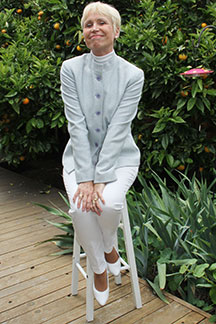In German-speaking countries, winter without Gluehwein is like… apple pie without ice cream, French fries without catsup, or chips without dip. Gluehwein (glow wine) is a hot, spiced wine. It is usually made from red wine and always served piping hot, making it extremely popular on cold winter days and especially during the Christmas season. Roughly 40 million liters of Gluehwein are consumed every year at German Christmas markets alone.
Gluehwein – around the world
Although known by different names, variations of this hot, spiced wine are enjoyed throughout the world. Ingredients may differ, but the enjoyment is universal. Poles relish their “heated wine.” In Hungary, Romania, the Czech Republic and Macedonia “boiled wine” is a favorite. The people in Bulgaria, Bosnia, Croatia and Serbia drink “cooked wine” and the Italians delight in “burnt wine.” The Danes, Swedes, Norwegians, Fins and Icelanders call it “Gloegg,” and in the Netherlands it is referred to as “bishop’s wine.” The French and Turks simply call it “hot wine,” and the Russian “Glintwein” is based on the same recipe as the German Gluehwein. In Germany, a popular variation of Gluehwein is the Feuerzangenbowle (fire-tongs bowl). It is made from the same recipe, but a rum-soaked sugarloaf is placed on the pot, set on fire and allowed to drip into the wine.
Gluehwein – ingredients
This delicious cold weather drink is usually made from red wine, various spices (cinnamon, cloves, star anise, cardamom, vanilla bean), lemon or orange juice and sugar. After bringing the mixture close to a point, rum or some other liquor may be added. Gluehwein can also be made with white wine; however, this version is less popular than its red counterpart. Occasionally, fruit wines, such as blueberry wine or cherry wine, are also used.
My Gluehwein recipe
Every Gluehwein aficionado has his or her favorite recipe. Here is mine:
Ingredients: 2 cups of water, 2 bottles of good quality red wine, juice of 2 lemons, 5 oz sugar, 6 cloves, 2 cinnamon sticks, 2 oranges (cut into bite size pieces), orange slices for decoration, 3 oz rum (optional)
Preparation: Place the water and spices in a pot and bring to a boil. Simmer for 15 minutes. Discard the spices. Add the remaining ingredients (except rum), stir and bring close to the boiling point without allowing the mixture to boil. This keeps the alcohol from evaporating. Serve Gluehwein in lightly prewarmed cups. Decorate each cup with an orange slice.
If you don’t want to bother making your own spiced wine, just book a flight and head for one of the many Christmas markets in Germany.
For a sneak peek at the first 20+ pages of my memoir, Walled-In: A West Berlin Girl’s Journey to Freedom, click “Download a free excerpt” on my home page and feel free to follow my blog about anything German: historic or current events, people, places or food.
Walled-In is my story of growing up in Berlin during the Cold War. Juxtaposing the events that engulfed Berlin during the Berlin Blockade, the Berlin Airlift, the Berlin Wall and Kennedy’s Berlin visit with the struggle against my equally insurmountable parental walls, Walled-In is about freedom vs. conformity, conflict vs. harmony, domination vs. submission, loyalty vs. betrayal.














